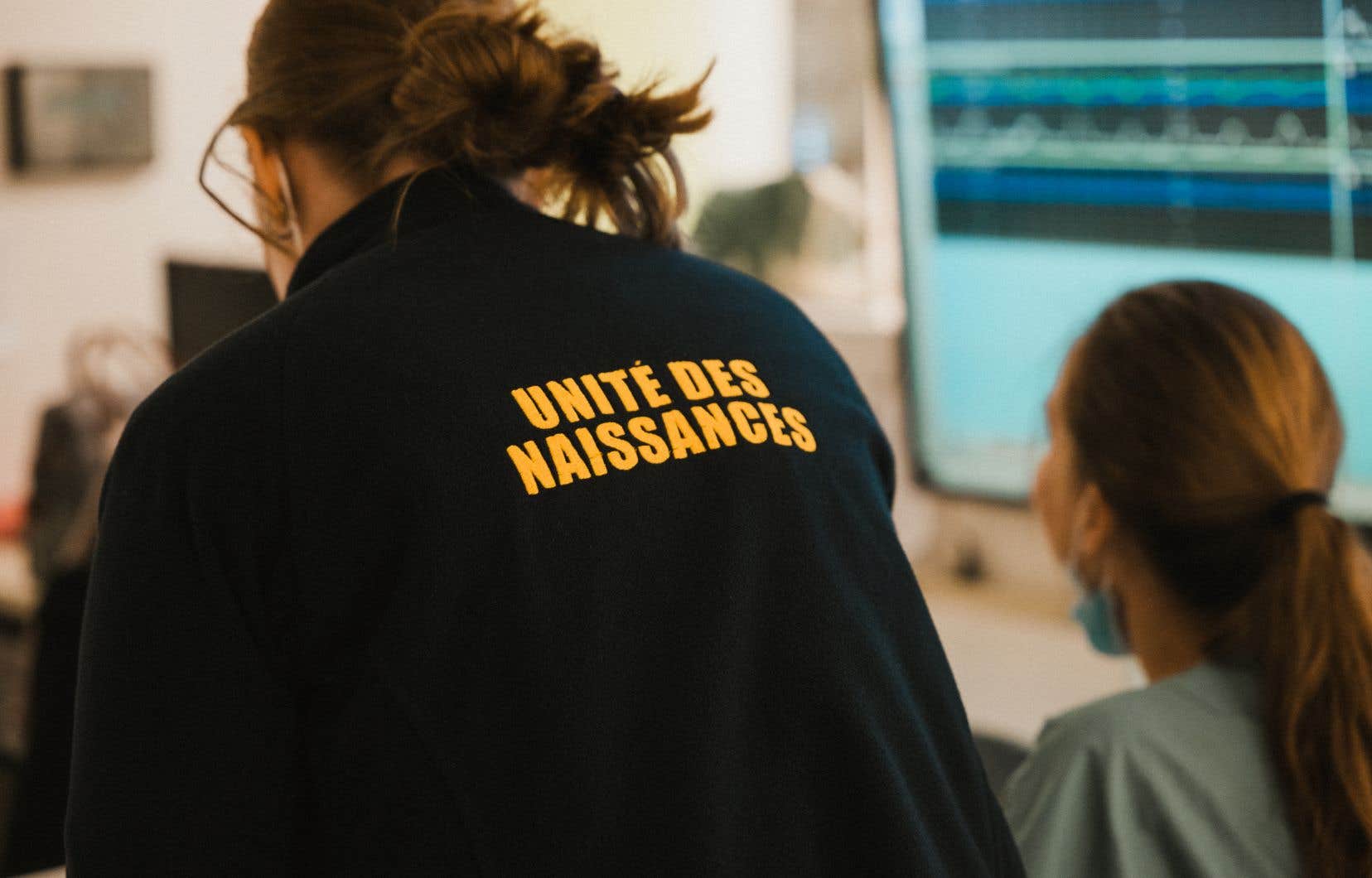Nursing graduates are prohibited from practicing in a delivery room before passing their professional examination. The Sainte-Justine University Hospital Center (CHU) and the Jewish General Hospital are conducting a pilot project in the hope that recruits who hold a bachelor’s degree will be able to work in these units, which are also short of staff.
Candidates for the practice of the nursing profession (CEPI) have no longer been able to practice in a delivery room since 2016. The Order of Nurses of Quebec (OIIQ) withdrew this right from them following the death of a mother shortly after giving birth at Maisonneuve-Rosemont Hospital in 2008. A CEPI was involved in the care provided to the patient.
“This death led us to think about the OIIQ, to ask ourselves if it was safe for CEPIs to work with parturients, particularly because of the complexity of the clinical situation,” explains Caroline Roy, director of development. and professional support to the Order. “We remember that this is care that we provide to both the mother and the fetus, which still requires constant monitoring. These are situations where, when there are complications, things deteriorate quickly. »
Since the OIIQ decision, recruitment has been “difficult” in the delivery rooms of Quebec hospitals, according to Karine Bouchard, assistant director of nursing for the professional practices component at CHU Sainte-Justine. She explains that young nurses tend to stay in the unit where they worked as a CEPI, because they quickly develop “a great sense of belonging” and gain confidence in their abilities.
Faced with this recruitment problem, the Sainte-Justine University Hospital Center (CHU) and the Jewish General Hospital had the idea of launching a pilot project aimed at integrating CEPIs — holding a university degree — into their delivery rooms . The initiative, which was authorized by government decree, began in June and will end at the end of this year. It is evaluated by university researchers.
“We would like to demonstrate with the research project that the integration of CEPIs, with sufficient support, is safe,” says Lyne Charbonneau, clinical-administrative coordinator of the mother-child trajectory at the nursing department of the CIUSSS Center -West-Island-of-Montreal.
The Order already allows CEPI graduates to practice with patients in a “critical phase”, for example in intensive care and the emergency room. A new nurse – with a DEC or BAC in hand – can also work in the delivery room from “the day after” obtaining a positive result in the Order’s exam, recalls Karine Bouchard. “Is the practice of both [CEPI et infirmière débutante] Is it also safe if we put the modalities in place? » she asks. It is precisely this question that the research project will have to answer.
More supervision
At CHU Sainte-Justine, four CEPIs have taken part in the pilot project since June. The health establishment wishes to recruit four more by the summer. The Jewish General Hospital, for its part, has three participants during the last summer season and eight other recruits, so far, for next spring and summer.
Emilie Filiatrault started in the delivery room at CHU Sainte-Justine in mid-January. CEPI, who completed eight days of theoretical training, is currently completing her 22 days of practical training. “It’s definitely a little stressful at first,” says the 23-year-old. We try to live up to it. But we are so well supported that the stress goes away, and it’s really just fun and learning. It’s the fun. »
Once the orientation is successful, the CEPI is paired with a nurse for four to five weeks. She then works for four to eight weeks with a nurse who supervises two CEPIs at the same time. She therefore receives more support than a novice nurse.
“A new nurse who [réussi] the Order’s examination will have the same number of days of theoretical training and the same number of days of practical orientation, therefore 8 days and 22 days”, specifies Marie-Christine Charest, nursing science consultant and manager of this file at CHU Sainte-Justine. “But she won’t necessarily get matched with a nurse after that. It automatically falls into autonomous practice. This is the distinction between the two. »
Raphaëlle Savard has an evening shift in the delivery room at CHU Sainte-Justine. She took her first steps there last summer as CEPI as part of the pilot project. She had previously done an internship there for the university. “For me, it’s a dream,” she said. I’ve been telling my family for a long time that I want to work in the delivery room. » However, she had fears. “I was afraid of the delivery room because I thought maybe I’m not good enough. I think anyone says that. »
The support she received reassured her. She admires her experienced colleagues. “Of course you look at nurses who have been there for 20 years and you say to yourself “my God, they are really good!”. It’s impressive. You want to become like them when you grow up. »
